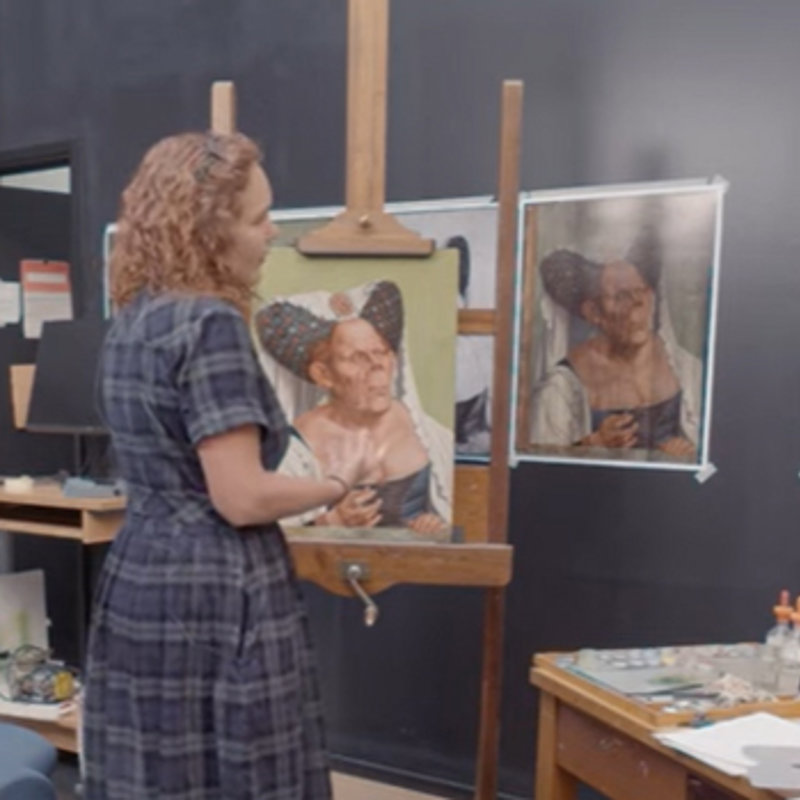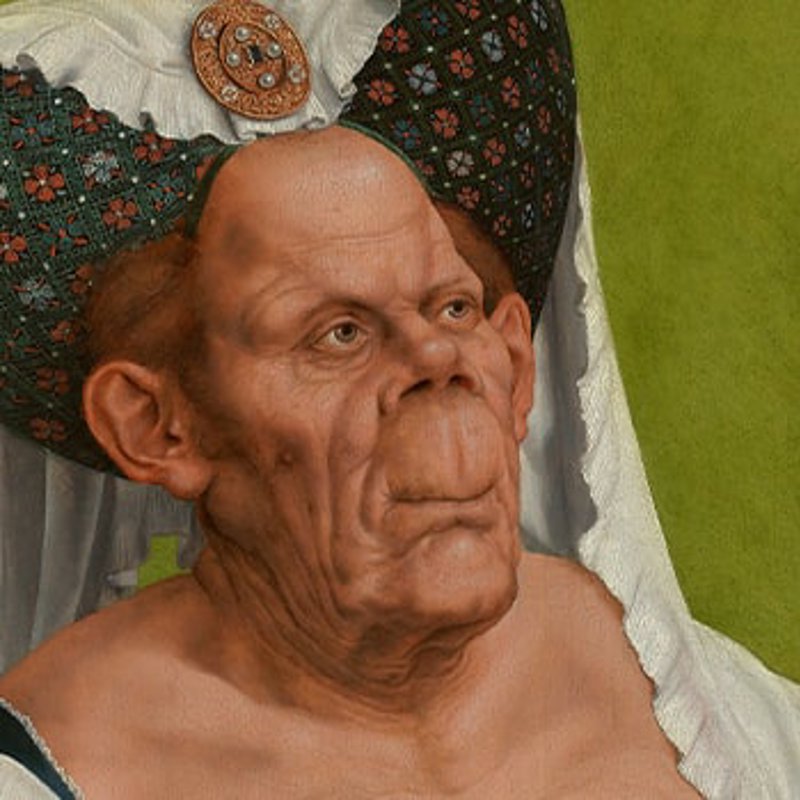This exhibition looks again at one of the best-known faces in the National Gallery: Quinten Massys’s 16th-century depiction of an old woman, a painting known as ‘The Ugly Duchess’. For the first time, this work is displayed with a related drawing after Leonardo da Vinci, showing their shared interest in fantastical, ‘grotesque’ heads and the vibrant artistic exchange between Italy and Northern Europe in the Renaissance.
‘The Ugly Duchess’ is reunited in the exhibition with her companion, 'An Old Man', on rare loan from a private collection. Massys shows us a woman whose age, appearance and deportment are noticeably different to other women represented in the collection. This is a deliberate choice by the artist. Her exaggerated facial features, devil-like headdress, low-cut dress and wrinkled bosom were used by Massys to parody the traditional marriage portrait: this is an old woman acting like a maiden and offering her partner – who is more formally and soberly dressed – an unrequited token of her love.
You might think that this painting served only as a cruel joke, where we are invited to laugh at this woman’s self-delusion. However, when you look beyond the surface you may discover a Duchess who is also subversive, fierce, and defiant – brazenly flouting the conventions of her day. The painting captures the rise of secular and satirical art during the Renaissance, two areas that Massys pioneered.
The exhibition also includes artworks that look at how women, old age and facial difference were satirised and demonised in the Renaissance, shaping attitudes that still exist today.




